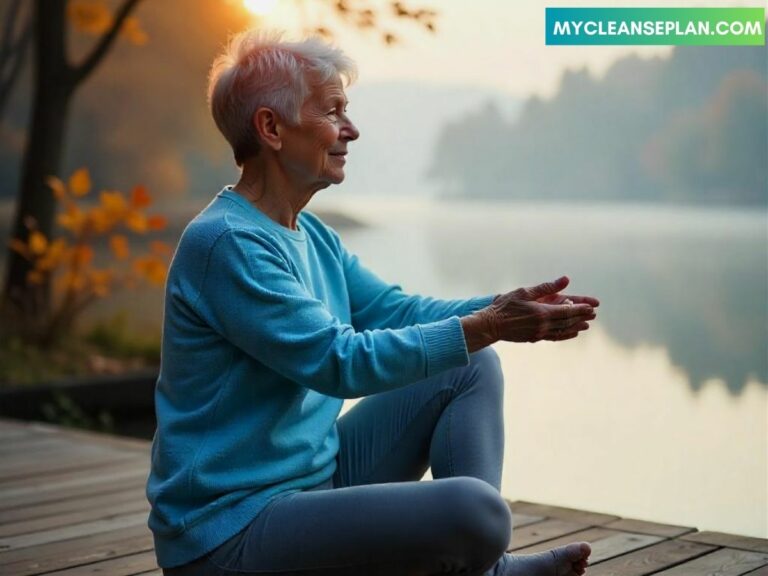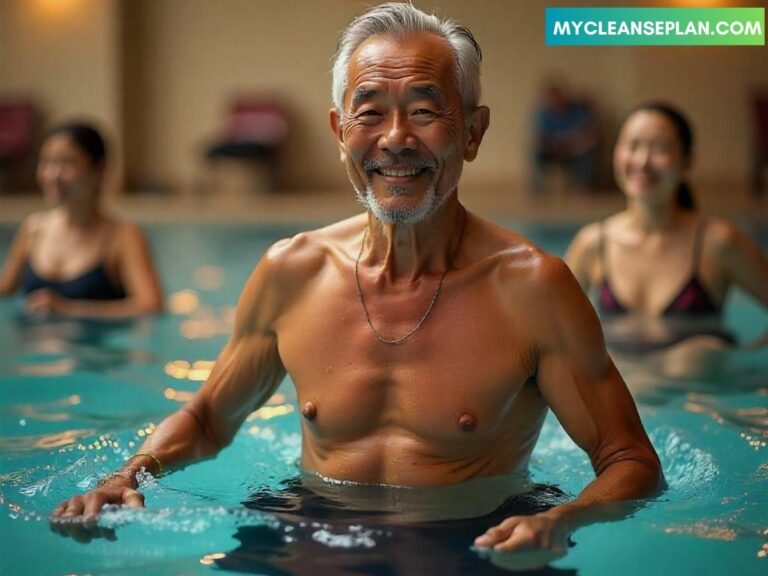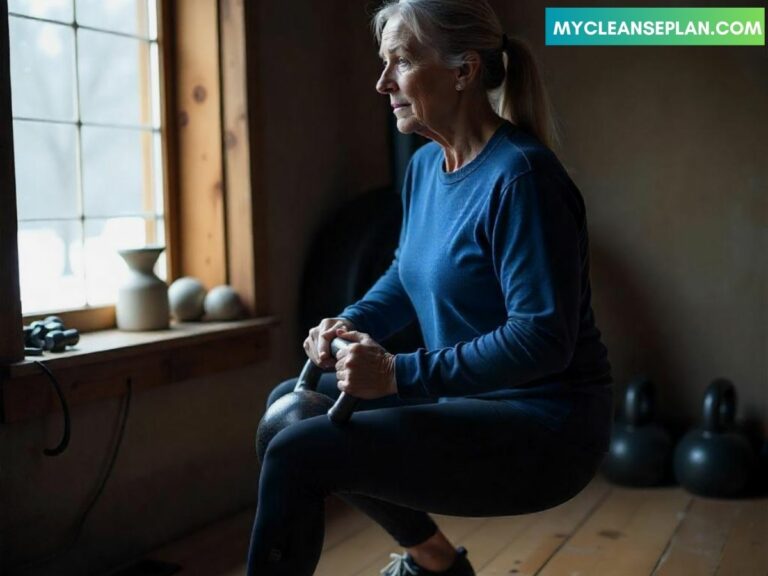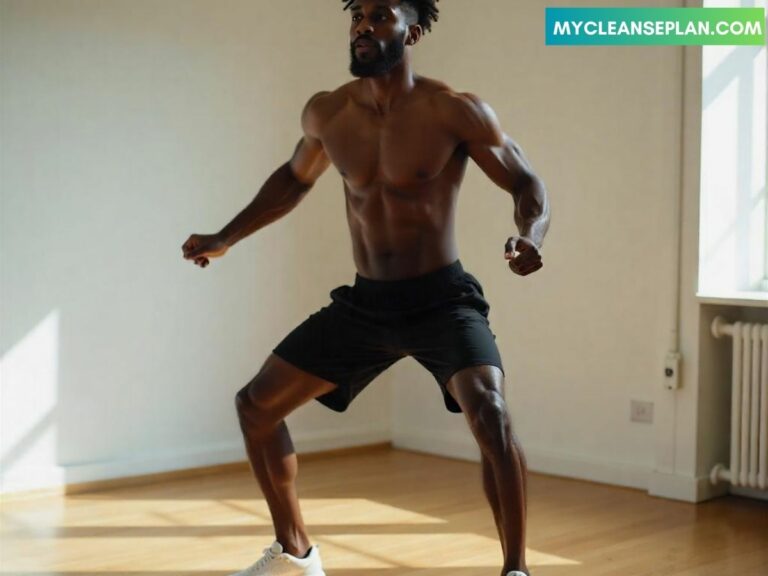Balance Exercises to Prevent Falls
Thinking about balance reminds me of its vital role in our health and safety. Falls can be very harmful, causing injuries and even death, mostly among older adults. They can also lead to a loss of independence.
Adding simple yet effective exercises to our daily life can greatly lower fall risks. These exercises boost stability, strength, and flexibility. This way, we can actively prevent falls.
Key Takeaways
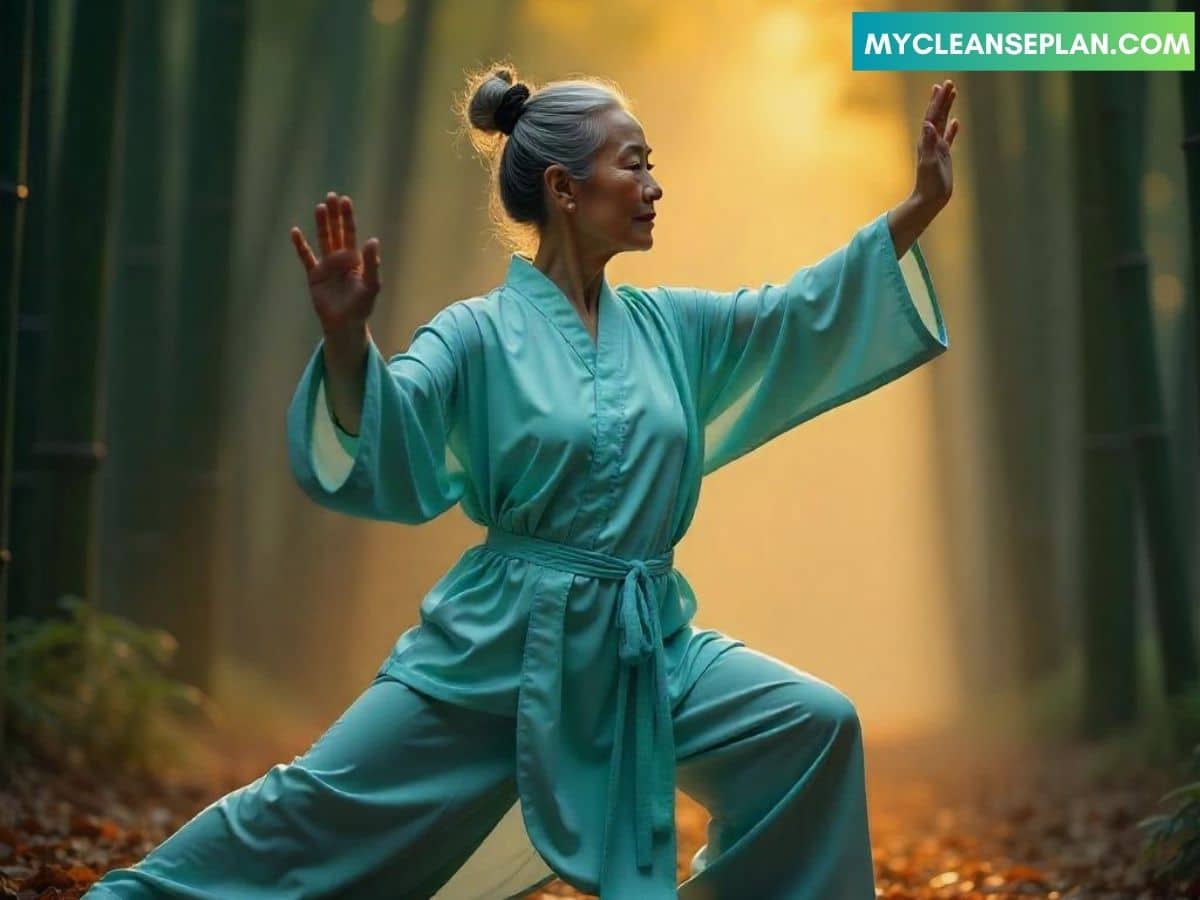
Why Balance Matters for Your Health and Safety

Understanding balance is vital for our well-being. It’s not just about staying upright. It also affects our health and safety.
The Science Behind Balance and Stability

Our bodies keep balance through a complex system. It involves sensory inputs, muscle strength, and brain control. Sensory inputs come from our eyes, inner ear, and body sense.
When these systems work well, we balance easily. But, any problem can make balance hard.
How Good Balance Prevents Injuries
Good balance helps prevent falls and injuries. It makes us less likely to trip or stumble. This lowers the chance of broken bones, sprains, and other injuries.
Exercises that improve balance can greatly lower fall risks. This is very important for older adults. Falls can cause serious health issues and take away independence.
Statistics on Falls and Their Consequences
Falls are a big problem for seniors. Millions of older adults go to emergency rooms each year for fall injuries.
Falls can lead to serious problems like hip fractures, head injuries, and even death. Improving balance can greatly reduce fall risks. Knowing these stats shows how important balance training and fall prevention are.
Understanding Age-Related Balance Changes

Aging leads to physical changes that can affect our balance. It’s key to grasp these changes to create effective balance training for seniors.
Physical Factors That Affect Balance
Several physical factors lead to balance issues in older adults. Muscle strength and mass loss, along with sensory system changes, are major contributors.
Muscle Strength and Mass Loss
As we age, we lose muscle mass and strength. This loss can make it harder to stay balanced. Exercises that boost muscle strength can help counteract this loss.
Sensory System Changes
Our sensory systems, like vision, hearing, and proprioception, are vital for balance. Age-related changes in these systems can make us less stable.
Medical Conditions That Impact Stability
Certain medical conditions, like diabetes, Parkinson’s disease, and arthritis, can greatly affect balance. It’s vital to manage these conditions to keep stability.
Medication Effects on Balance
Some medications can cause dizziness or lightheadedness, raising the risk of falls. It’s important to talk to a healthcare provider about medications to avoid side effects.
Assessing Your Current Balance Abilities

Checking your balance is key to making a good exercise plan. Before starting any balance exercises, know your current level. This helps spot where you need to get better and if you should get help from a pro.
Simple At-Home Balance Tests
You can test your balance at home with simple tests. The Single-Leg Stance Test and the Timed Up and Go Test are good ones.
Single-Leg Stance Test
Stand on one leg, using a chair for support if you need it. Hold for 10 seconds. Then switch legs and do it again. If you find it hard, you might need to work on your balance.
Timed Up and Go Test
Stand up, walk 10 feet, turn, walk back, and sit down. See how fast you can do it. If it takes over 12 seconds, you might be at risk for falls.
When to Seek Professional Assessment
If you find the tests hard or worry about your balance, see a healthcare expert. They can do a full check and suggest exercises just for you.
Setting Realistic Balance Goals
Setting goals that you can reach is important. Based on your first check, make clear, reachable goals. For example, aim to stand on one leg for 30 seconds without help in a month.
| Balance Test | Your Result | Goal |
|---|---|---|
| Single-Leg Stance | 10 seconds | 30 seconds |
| Timed Up and Go | 15 seconds | 10 seconds |
By checking your balance often and setting smart goals, you can get better at staying steady. Adding balance workouts to your routine will also make you fitter overall.
Balance Exercises to Prevent Falls

Improving balance is key to avoiding falls. Adding specific exercises to your daily routine can boost your stability. These exercises help lower your fall risk and keep you independent.
Standing Balance Exercises
Standing balance exercises test your stability while standing. They can be adjusted for different fitness levels. This makes them suitable for many people.
Single-Leg Stands
Stand on one leg, using a chair or wall for support if needed. Hold for 10-30 seconds and switch legs. This strengthens your ankles and improves overall stability.
Heel-to-Toe Walking
Walk in a straight line, with the heel of one foot in front of the other’s toes. This mimics a tightrope walker and boosts balance and coordination.
Seated Balance Activities
Seated balance activities are great for those with limited mobility. They can be done while seated, making them accessible to many.
Chair Exercises for Limited Mobility
While seated, lift your legs off the floor, one at a time, and hold for a few seconds. Marching in place or lifting and lowering your toes also works. These exercises strengthen your lower body and improve balance.
Dynamic Balance Movements
Dynamic balance movements test your balance while moving. They mimic everyday activities and enhance stability.
Clock Reach Exercise
Stand with your feet shoulder-width apart and imagine a clock face in front of you. Reach for 12 o’clock, then 3 o’clock, and 9 o’clock without moving your feet. This exercise requires you to shift your weight, challenging your balance.
Weight Shifts
Stand with your feet shoulder-width apart and slowly shift your weight from one foot to the other.
You can also move your weight forward and backward or side to side. This exercise improves balance by requiring you to adjust to different weight distributions.
Adding these balance exercises to your routine can greatly improve your stability and reduce fall risk. Start slowly and progress at your own pace. Always consult with a healthcare professional before starting any new exercise program.
Core-Strengthening Exercises for Stability

A strong core is key for good balance and stability. The core muscles, like the abdominals and back, support the body’s posture and help with movement.
The Connection Between Core and Balance
The core is called the body’s “powerhouse” because it gives stability for movement. A strong core improves balance by giving a stable base for the body. This is important for preventing falls, mainly in older adults.
Beginner Core Exercises
For beginners, there are easy core exercises to start with. These include:
- Modified Planks: This is a simpler version of the plank. You place your knees on the ground instead of your toes. It works your core without too much strain.
- Seated Core Rotations: Sit on a chair or mat and rotate your torso. It engages your core without too much back strain.
Advanced Core Stabilization Techniques
For those looking for more of a challenge, there are advanced techniques. One is:
- Balance Ball Exercises: Using a balance ball works your core and challenges your balance and stability.
Adding these exercises to your routine can boost your stability and lower fall risks. Start slow, and gradually get better, if you’re new to core exercises.
Lower Body Exercises to Enhance Balance

Lower body exercises are key to better balance and fall prevention. They strengthen ankles, legs, and hips. This improves your stability.
Ankle and Foot Strengthening
Strong ankles and feet are vital for balance. Exercises for these areas can stop falls.
Toe Raises and Curls
Toe raises and curls are great for toe and foot strength. Stand on a step edge with heels off, then raise and lower on tiptoes. For curls, curl a towel with your toes on the floor.
Ankle Circles
Ankle circles boost ankle flexibility and strength. Sit with legs straight, lift one foot, and draw circles with your toes. Start small and grow the circles as you get better.
Leg Exercises for Stability
Strong legs are key for balance, during movements that test it.
Squats and Modified Squats
Squats strengthen legs. Stand wide, lower down, keeping back straight and knees behind toes. Use a chair for support or reduce squat depth for modified squats.
Hip-Strengthening Movements
Hips are important for balance. Strengthening hip muscles improves stability.
Side Leg Raises
Side leg raises target glutes for better hip stability. Lie on your side, lift top leg up, and lower it back down.
Hip Bridges
Hip bridges strengthen glutes and lower back. Lie on your back, bend knees, and lift hips up, then lower them back down.
Adding these exercises to your routine boosts balance and fall risk reduction. Regular practice and increasing difficulty will enhance stability and confidence.
Balance Training for Seniors: Special Considerations

Balance training for older adults is more than just staying steady. It’s about living a better life. As we get older, our bodies change, making it harder to balance and increasing fall risks. So, it’s key to focus on balance training that meets seniors’ unique needs.
Safety First: Precautions for Older Adults
Keeping safe is the most important thing when doing balance exercises. Seniors should work out with a buddy or use tools like canes or walkers to avoid falls. Having a sturdy object or wall nearby can give extra support and confidence.
- Make sure the workout area is free from things that could trip you up.
- Wear shoes that don’t slip and are comfy.
- Begin with simple moves and slowly make them harder.
Modified Exercises for Limited Mobility
Even if you can’t move much, you can do balance exercises. Try seated marching or leg lifts. Using resistance bands while sitting can also help build strength and balance.
Progression Strategies for Seniors
As you get better at balance training, it’s important to make the exercises harder slowly. You can do this by using less support, moving more, or adding harder moves.
When and How to Increase Difficulty
When to make exercises harder depends on how well you’re doing. Try to make them harder when they feel too easy. This could mean standing on one foot longer or doing moves with your eyes closed.
Using Support Tools Effectively
Tools like canes, walkers, and resistance bands are very helpful. They help you stay steady and feel more confident. It’s important to learn how to use them right from a healthcare expert or physical therapist.
By making balance training fit the needs of seniors and adding safety, modified exercises, and ways to get better, older adults can stay steady and keep their independence.
Tracking Progress and Staying Motivated

To get better balance, it’s key to track your progress and stay motivated. As you keep doing balance exercises, seeing how you’ve improved can keep you excited and focused on your goals.
Measuring Balance Improvements
One good way to track your progress is by redoing the balance tests you did at the start. Seeing how your scores change over time shows how far you've come. You can also write down your daily or weekly workouts, noting any wins or challenges.
Celebrating Small Victories
It’s important to celebrate small wins. Whether it’s mastering a new exercise or standing on one foot a bit longer, recognizing these moments boosts your confidence. It keeps you motivated to keep going.
Overcoming Balance Training Plateaus
It’s normal to hit a wall in balance training. To get past it, try something new or add more challenges to your routine.
Varying Your Routine
Mixing up your exercises can make things more interesting. Try different standing exercises or add dynamic movements. This keeps your workouts fresh and fun.
Adding New Challenges
Introducing new, harder exercises or activities can also help. For instance, try standing on a softer surface or doing exercises with your eyes closed. This adds variety and keeps you challenged.
As Jane Doe, a balance training expert, once said,
“The key to successful balance training is not just about the exercises you do, but also about how you track your progress and stay motivated. Celebrating small victories and varying your routine are essential for long-term success.”
By staying committed and motivated, you can keep improving your balance and health. This reduces your risk of falls and makes life better overall.
Creating a Fall-Safe Environment

Making your home fall-safe is as important as doing balance exercises to prevent falls. A few simple changes can greatly lower your fall risk.
Home Safety Assessment Checklist
Start by checking your home for fall hazards. Look for loose rugs, uneven floors, and cluttered paths. Make sure all areas, like stairs and hallways, are well-lit.
- Remove tripping hazards such as cords and clutter
- Secure loose rugs with double-sided tape
- Improve lighting in dimly lit areas
Helpful Assistive Devices
Using assistive devices can make your home safer. Install grab bars in bathrooms and stairways. Non-slip mats in the bathroom and kitchen add extra grip.
Lighting and Flooring Considerations
Good lighting and flooring are key to a safe home. Make sure your home is well-lit, but avoid too much moisture in areas like bathrooms and kitchens.
Best Flooring Types for Stability
Choose flooring that’s not slippery. Avoid slick surfaces and use non-slip coatings or mats in risky spots.
Optimal Lighting Placement
Place lights to highlight fall risks. Use nightlights in hallways and bathrooms for better night navigation.
These steps help make your home safer. They work well with your stability exercises to prevent falls.
FAQ Of Balance Exercises to Prevent Falls
What are the best balance exercises to prevent falls?
The top balance exercises include standing on one leg and walking heel-to-toe. Seated exercises and dynamic movements like the Clock Reach are also great. These help prevent falls.
How often should I do balance exercises?
Aim to do balance exercises 2-3 times a week. Doing them daily can lead to better balance and stability.
Can balance exercises be done with limited mobility?
Yes, you can do balance exercises while seated or with a chair’s help. This makes them accessible for those with limited mobility.
How do I know if I’m improving my balance?
Track your progress by retaking balance tests. Celebrate small victories to see how far you’ve come.
Are there any safety precautions I should take when doing balance exercises?
Yes, always exercise with a partner or use support tools. This is important, even if you’re just starting, to stay safe.
Can balance training help with other health conditions?
Yes, improving balance can help with other health issues. It can reduce injury risks, improve stability, and boost overall health and independence.
How can I make my home safer to prevent falls?
Make your home safer by removing tripping hazards and installing grab bars and non-slip mats. Improve lighting and use assistive devices to reduce fall risks.
What are some common medical conditions that affect balance?
Conditions like diabetes, Parkinson’s disease, and arthritis can impact balance. It’s key to work with a healthcare professional to create a balance training plan that fits your needs.
Conclusion: Building Confidence Through Better Balance
Improving balance through exercises and a safe environment boosts health and independence. Seniors can do standing and seated activities, strengthen their core, and work on their lower body. This helps them move safely and feel more confident.
Balance exercises lower fall risks and encourage a healthier lifestyle. Making homes safer by removing hazards and improving lighting also helps. With effort and time, better balance leads to a more confident and healthy life.
Following these guidelines and exercises helps keep independence and quality of life high. Adding balance exercises to daily routines has a lasting, positive effect on well-being.

